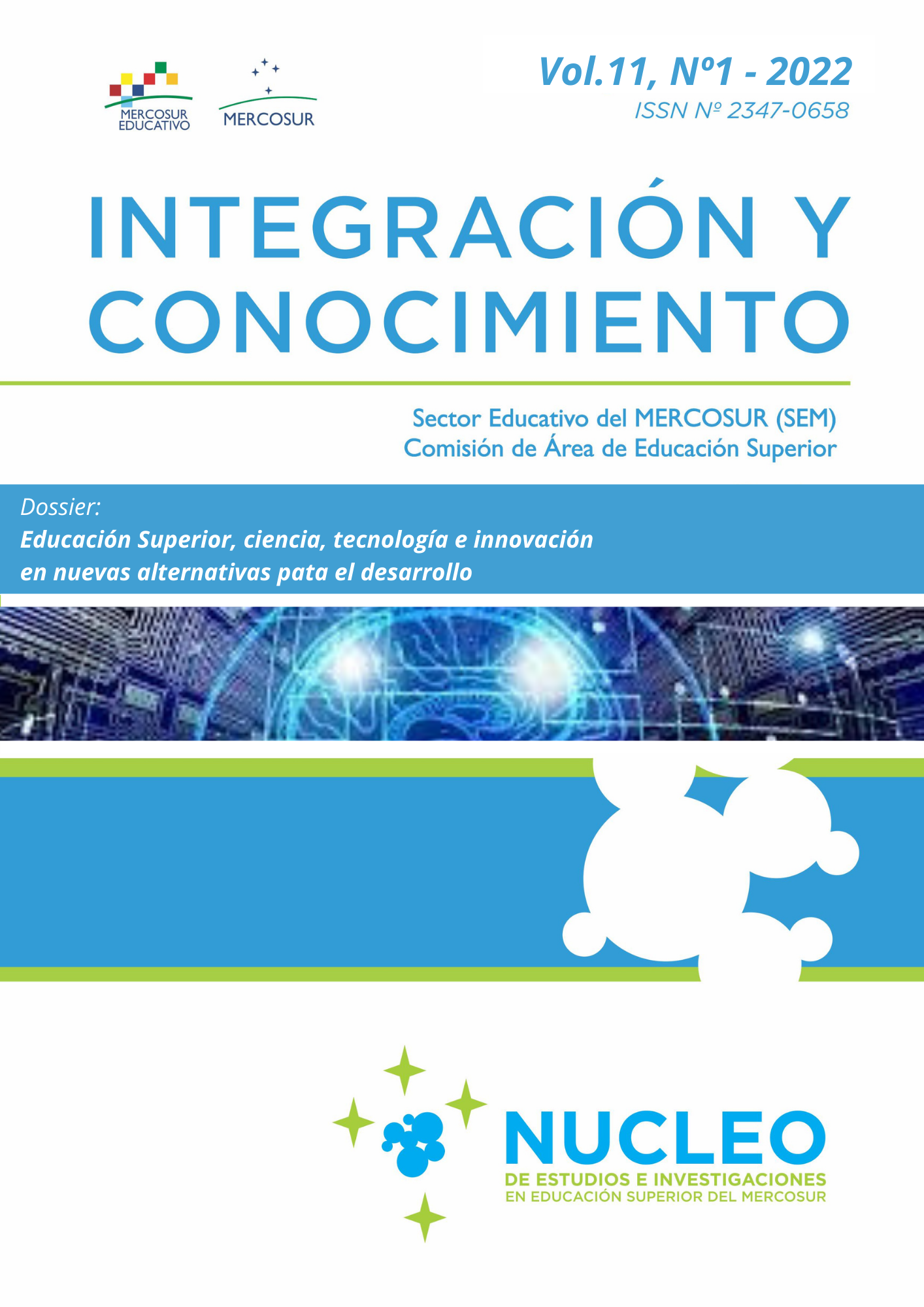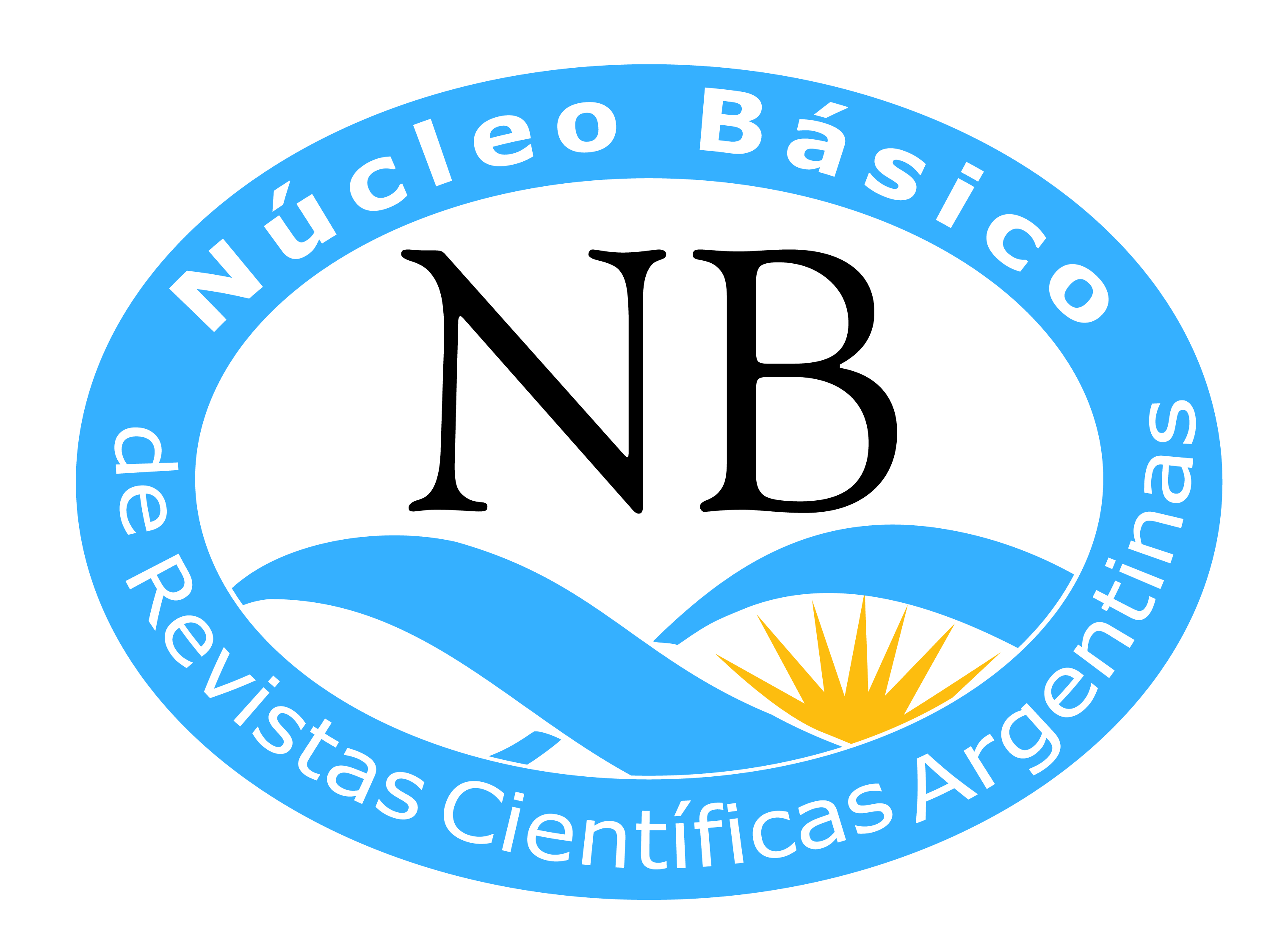Higher Education, STI and Inequality: limits and contradictions in times of COVID-19
DOI:
https://doi.org/10.61203/2347-0658.v11.n1.36521Keywords:
higher education, science, higher technology and innovation, inequalityAbstract
For at least the last thirty years, the promise has been projected that scientific and technological progress will guarantee economic development and social well-being, realizing the values of reason and well-being for everyone. Contrary to the great hopes and achievements foreseen by the globalization movement in the world, today we are experiencing a reconfiguration of exclusion that has been intensified with the pandemic caused by the COVID-19 disease, and which has resulted in the exacerbation of the inequalities that are projected to the world as a fragmented space, in which, a few benefit from the concentration of wealth that leads large segments of the world's population to live on the margins of the so-called "civilization." This is the case of access to higher education in Mexico, but also of its permanence and relationship with inequality. In particular, it is interesting to revalue the relationships between higher education - specifically vocational training in public universities - science, technology and innovation (STI) and their participation in this process, in the light of theoretical perspectives that recognize the capitalist system as main limit to a real transformation in the current socioeconomic structure, even more so in times of COVID-19. From a normative vision that defends the social value of knowledge, we believe that there is a broad framework of opportunities for there to be transversality in higher education policy and that of STI to generate conditions that combat the structure of inequality.
Downloads
References
ANUIES. (2020). Anuario Estadístico 2019-2020. México: ANUIES.
Alzugaray, S., Mederos, L., & Sutz, J. (2013). Investigación e innovación para la inclusión social: la trama de la teoría y de la política. Isegoría, (48), 25–50. Recuperado de https://doi.org/10.3989/isegoria.2013.048.02
Arendt, H. (1954). The Crisis in Education. Recuperado de https://www.normfriesen.info/files/ArendtCrisisInEdTable.pdf
Arocena, R. y Sutz, J. (2016). Universidades para el desarrollo. París: UNESCO.
Aronson, P. (2007). El retorno de la teoría del capital humano. Fundamentos en humanidades, 16, 9–26.
Atkinson, B. (2016). Desigualdad ¿Qué podemos hacer? México: Fondo de Cultura Económica.
Becker, G. S. (1993). Human Capital: A Theoretical and Empirical Analysis, with Special Reference to Education. Chicago: University of Chicago Press.
Borrás, S., & Edquist, C. (2019). Holistic innovation policy: theoretical foundations, policy problems, and instrument choices. Oxford: Oxford University Press.
Bourdieu, P., & Passeron, J.-C. (1995). La reproducción. Ciudad de México: Fontamara.
Buendía, A.; García Salord, S.; Grediaga, R.; Landesman, M.; Rodríguez-Gómez, R.; Rondero, N.; Rueda, M. y Vera, H. (2017). Queríamos evaluar y terminamos contando: alternativas para la evaluación del trabajo Académico. Sociológica, 32 (92), 309-326,
Buendía Espinosa, A., & Escorcia Romo, R. (2019). Presentación. En J. M. Corona Alcantar, & A. Buendía Espinosa, Desigualdad y pobreza (pp. 11-30). México: Bonilla Artigas y UAM.
Buendía, A. (2020). Revisitar las políticas para la educación superior en México: ¿de su agotamiento a su transformación? Universidades. Revista de la Universidades de América Latina y el Caribe, (86), 35-52.
Buendía, A. (2021). Imaginar la UAM Xochimilco: rutas para la recreación colectiva desde la tradición, la innovación, la inflexión y el futuro deseado. Reporte técnico.
Cimoli, M., Porcile, G., Primi, A., & Vergara, S. (2005). Cambio estructural, heterogeneidad productiva y tecnología en América Latina. En M. Cimoli. (Ed.), Heterogeneidad estructural, asimetrías tecnológicas y crecimiento en América Latina (pp. 9-39). Chile: Publicación de las Naciones Unidas.
Daza, J. D. (2011). Los usos sociales del conocimiento. A propósito de las relaciones universidad-sociedad. Administración & Desarrollo, 39(53), 7-22.
Dubet, F. (2015). Solidaridad ¿Por qué preferimos la desigualdad? (aunque digamos lo contrario). Buenos Aires: Siglo XXI.
Dueck, C. e Inda, G. (2006). La teoría de la estratificación social de Weber: un análisis crítico. Revista Austral de Ciencias Sociales 11(01), 05-24. Recuperado de http://revistas.uach.cl/pdf/racs/n11/art01.pdf
Dutrénit, G., & Sutz, J. (2014). Sistemas de innovación para un desarrollo inclusivo. La experiencia Latinoamericana. México DC: Foro Consultivo Científico y Tecnológico.
Escorcia, R. (2021). Clases sociales, desigualdad y democracia excluyente en el siglo XXI. México: en prensa.
García, N. (2121). Experiencias universitarias y transición al empleo de los egresados de licenciatura de una universidad privada. (Tesis de grado en proceso).
Ibarra, E. (2001). La universidad en México hoy: gubernamentalidad y modernización. México: UAM/UAM-I/UDUAL.
Kent, R., Didou, S., y De Vries, W. (2001). Reformas financieras en las universidades públicas en México: años noventa, págs. 235-266. En R. Kent R, Experiencias de reforma en la educación superior en América Latina: los años noventa (pp.235-266). México: DIE-CINVESTAV.
Latapí, P. (2007). Conferencia magistral al recibir el doctorado Honoris Causa de la Universidad Autónoma Metropolitana. Perfiles Educativos, XXIX(115), 113-122.
Littler, J. (2018). Against Méritocracy. Culture, power and myths of mobility. New York: Routledge.
Marx, K. (2009). El capital. El proceso global de la producción capitalista. México: Siglo XXI.
Navarro Leal, M. A. (1998). Consideraciones teóricas para el estudio de egresados. En S. Barranco Ramson et. al, Esquema básico para estudios de egresados (pp.11-18). México: ANUIES.
Navarro-Cendejas, J. (2014). La inserción laboral de los egresados universitarios. Perspectivas teóricas y tendencias internacionales en la investigación. México, ANUIES.
Piketty, T. (2013). Capital in the Twenty-First Century. Massachusetts London: Harvard University Press Cambridge.
Puyana Mutis, A. (2018). Crisis económica y crisis de la teoría económica. Notas para el debate. Perfiles latinoamericanos, 26(51), 351-378. Recuperado de https://perfilesla.flacso.edu.mx/index.php/perfilesla/article/view/649
Rawls, J. (1995). Teoría de la Justicia. México: Fondo de Cultura Económica.
Rivera del Río, R.; Buendía Espinosa, A. y Pérez Díaz, A. B. (2021). Entre la desigualdad y la meritocracia: rutas y huellas de la equidad. El caso de Chapingo. México: Universidad Autónoma Metropolitana.
Rodríguez-Abitia, G., & Kriscautzky-Laxague M. (2018). Uso de tecnologías de información y comunicación en la educación superior en México. Recuperado de https://educatic.unam.mx/publicaciones/estudio-uso-tic-educacion-superior-mexico.pdf
Roemer, J. (1998). Equality and Oportunity. Cambridge: Harvard University Press.
Sandel, M. (2009). Justicia ¿hacemos lo que debemos? Madrid: De Bolsillo.
Sandel, M. J. (2020). The tyranny of merit: What’s become of the common good? United Kingdom: Penguin.
Sen, A. (1976). Poverty: An Ordinal Approach to Measurement. Econométrica, 44 (2), 219-231.
Sen, A. (1979). Equality of What? En S. McMurrin (Ed.), Tanner Lectures on Human Values (pp.195-220). Reino Unido: Cambridge University Press.
Thurow, L. y Lucas, R. (1972). The american distribution of income: a structual problem. Washington: U.S. Government Printing Office.
UNESCO, IDS y ISSC. (2016). World Social Sciences Report. Challenging Inequalities. Pathways to a Just World. París: UNESCO Publishing.
Universidad Autónoma Metropolitana. (UAM). (2021). Proyecto Emergente de Enseñanza Remota. Recuperado de https://www.uam.mx/educacionvirtual/uv/peer.html
Weber, M. (1997). Historia económica general. México: Fondo de Cultura Económica
Young, M. (1958). The rise of the Méritocracy 1870-2033. Bristol: Western Printing Services Ltd.
Downloads
Published
Issue
Section
License

This work is licensed under a Creative Commons Attribution-NonCommercial-ShareAlike 4.0 International License.
Authors who have publications with this journal accept the following terms:
a. Authors shall retain their copyright and guarantee the journal the right of first publication of their work, which shall simultaneously be subject to the Creative Commons License of Recognition which allows third parties to share the work as long as its author is indicated and its first publication is this journal.
b. Authors may adopt other non-exclusive licensing agreements for the distribution of the published version of the work (e.g., depositing it in an institutional telematic archive or publishing it in a monographic volume) provided that the initial publication in this journal is indicated.
c. Authors are allowed and encouraged to disseminate their work via the Internet (e.g. in institutional telematic archives or on their website) after publication of the article, which may lead to interesting exchanges and increased citations of the published work. (See The Effect of Open Access).



